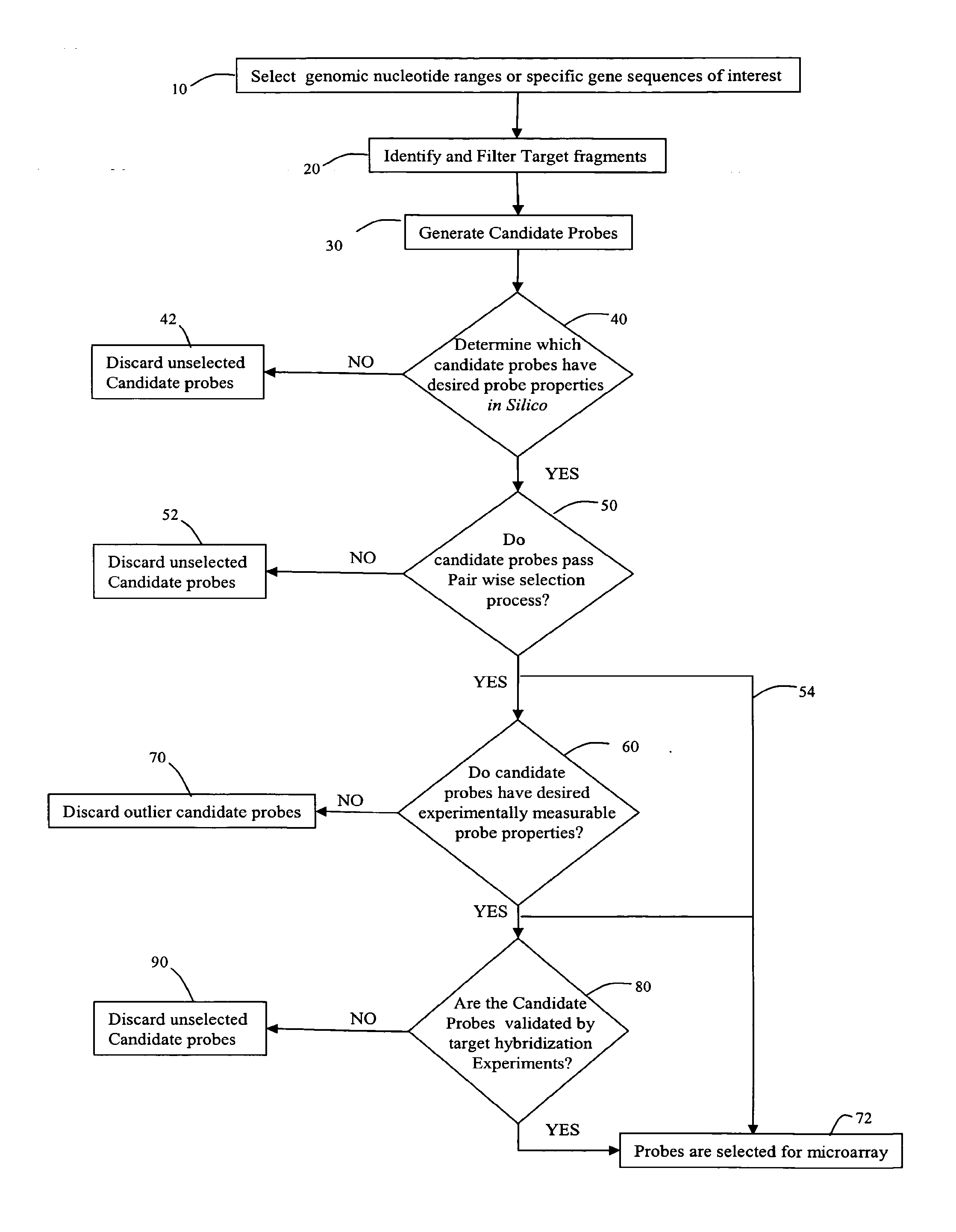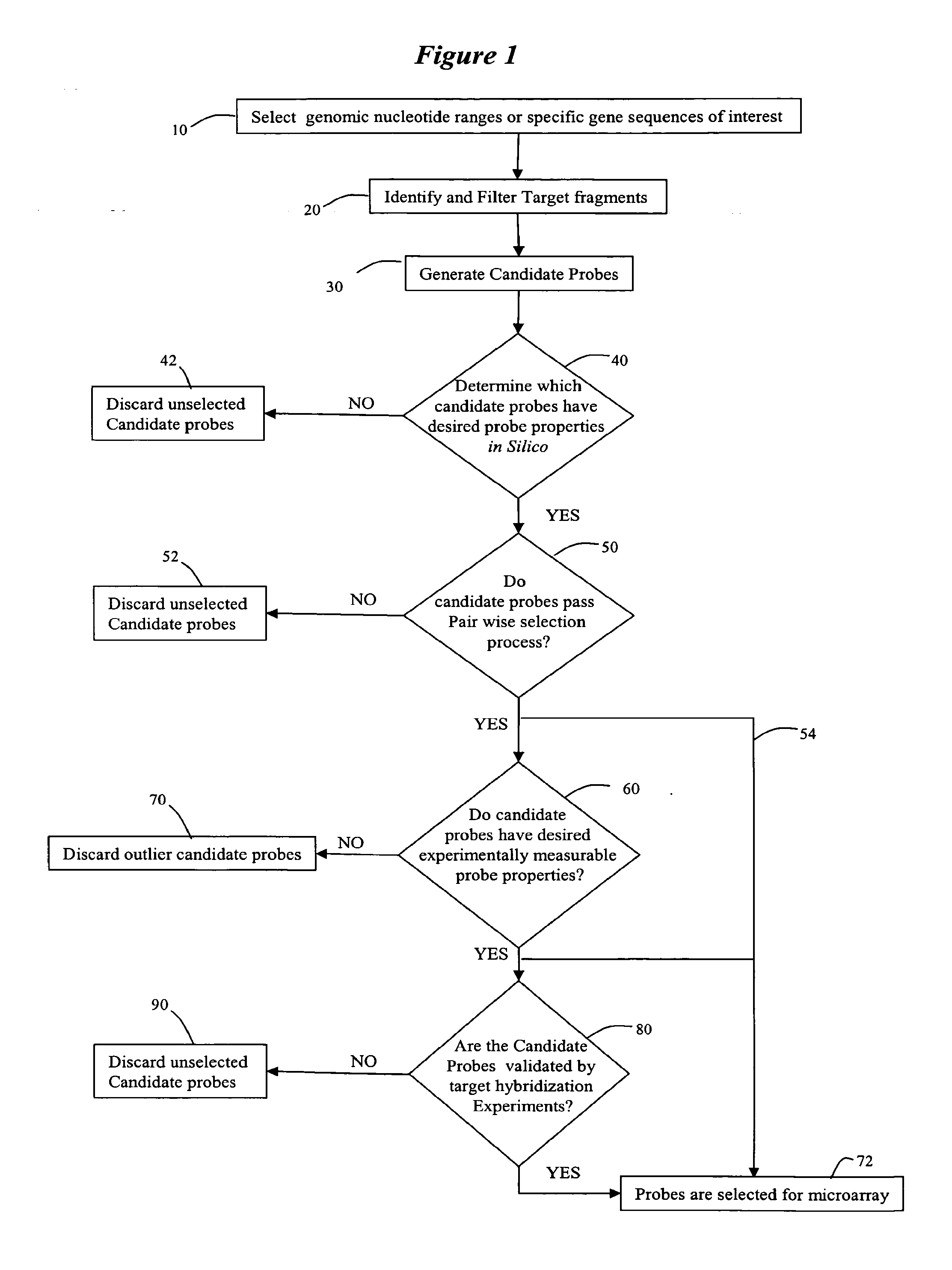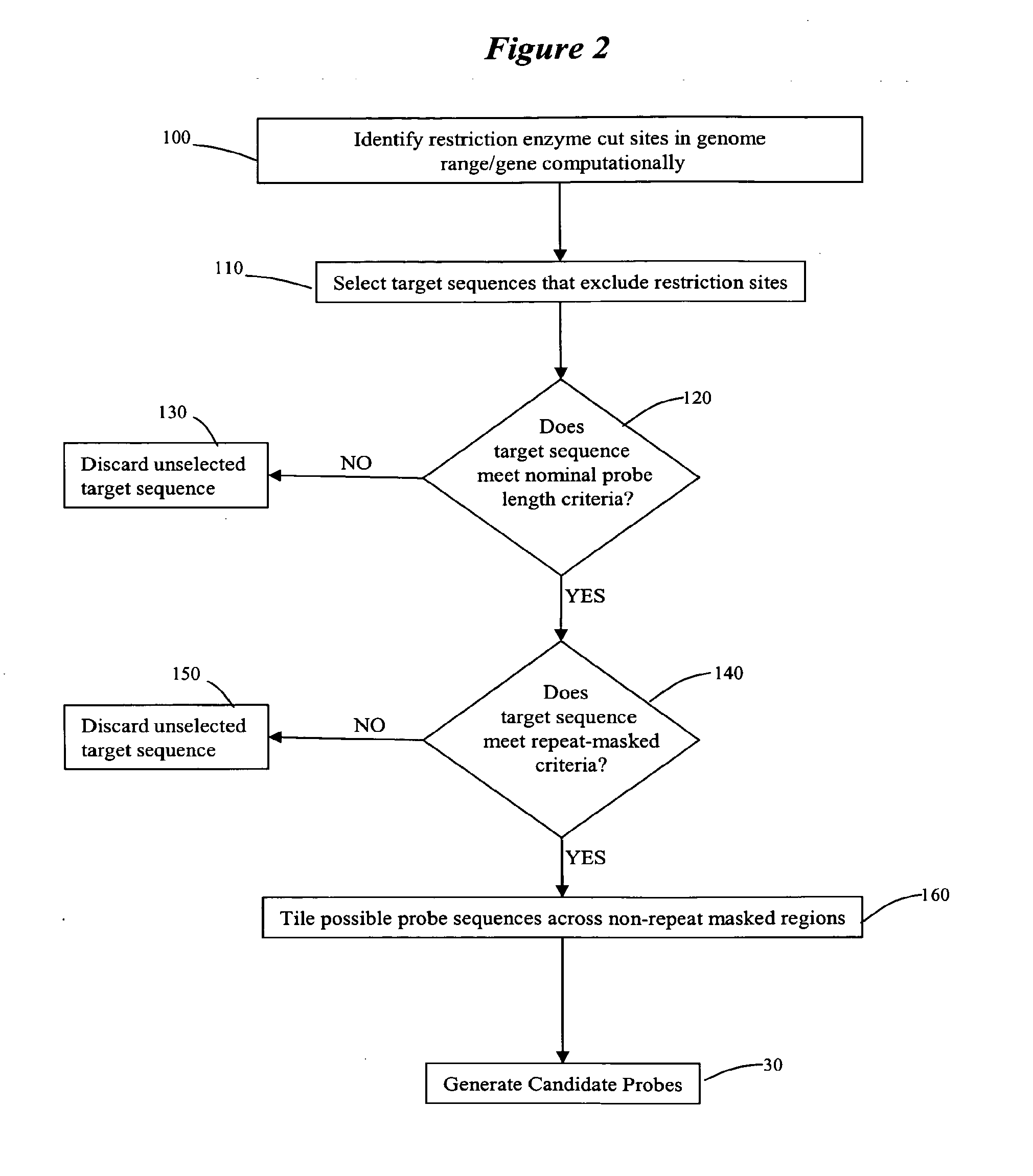Probe Design Methods and Microarrays for Comparative Genomic Hybridization and Location Analysis
a technology of genomic hybridization and probe design, applied in the field of microarrays for comparative genomic hybridization arrays and location analysis, can solve the problems of reducing the amount of computational time needed to evaluate the candidate probes, and reducing the number of possible candidate probes. , to achieve the effect of reducing the amount of computational time needed
- Summary
- Abstract
- Description
- Claims
- Application Information
AI Technical Summary
Benefits of technology
Problems solved by technology
Method used
Image
Examples
examples
[0194]The following examples are put forth so as to provide those of ordinary skill in the art with a complete disclosure and description of how to make and use the present invention, and are not intended to limit the scope of what the inventors regard as their invention nor are they intended to represent that the experiments below are all or the only experiments performed. Efforts have been made to ensure accuracy with respect to numbers used (e.g. amounts, temperature, etc.) but some experimental errors and deviations should be accounted for. Unless indicated otherwise, parts are parts by weight, molecular weight is weight average molecular weight, temperature is in degrees Celsius, and pressure is at or near atmospheric.
example i
[0195]This example utilized a single array design, with 22000 features, and included candidate probes for five chromosomes: Chr16, Chr17, Chr18, ChrX and ChrY. The test array had approximately three times as many probes, for each chromosome, as were eventually needed. The purpose of the test experiments was to select the best probe, according to the criteria described above, from these 3-fold redundant probe candidates.
[0196]The probes were designed and selected for five chromosomes, Chr16, Chr17, Chr18, ChrX and ChrY. Each chromosome was analyzed separately as a genomic range of interest, and probes for that chromosome which met the in-silico probe criteria (event 40 of FIG. 1) were placed onto a semi-final array. Below are the events which were carried out to identify candidate probes to be placed on a semi-final array.
[0197]Restriction digest of genomic sequences: Each chromosome was subjected to a computational process that models the restriction digest of the hybridization assa...
example ii
[0222]In this example, validation experiments were completed using male and female samples, and cell lines containing non-naturally occurring copy numbers of X, such as 3X, 4X and 5X. The experiments were conducted using an array specifically designed for CGH, designated D4CGH1, which included over 2000 probes designed specifically for chromosome X. These candidate probes were made in three lengths 60-mers, 45-mers and 30-mers. Male and female samples were hybridized on these arrays in replicate experiments. From these data, the slope (i.e. the separation between the distributions of X-chromosome probes, which have a nominal log2 ratio of −1 for male vs. female samples, and the autosomal probes, which have a nominal log2 ratio of 0), and noise measurements (i.e. the widths of the distributions of X-chromosome probes and of autosomal probes) were calculated, and subsequently, rules for determining the viability of probes in silico were established by this experiment as well as others...
PUM
| Property | Measurement | Unit |
|---|---|---|
| temperature | aaaaa | aaaaa |
| Tm | aaaaa | aaaaa |
| Tm | aaaaa | aaaaa |
Abstract
Description
Claims
Application Information
 Login to View More
Login to View More - R&D
- Intellectual Property
- Life Sciences
- Materials
- Tech Scout
- Unparalleled Data Quality
- Higher Quality Content
- 60% Fewer Hallucinations
Browse by: Latest US Patents, China's latest patents, Technical Efficacy Thesaurus, Application Domain, Technology Topic, Popular Technical Reports.
© 2025 PatSnap. All rights reserved.Legal|Privacy policy|Modern Slavery Act Transparency Statement|Sitemap|About US| Contact US: help@patsnap.com



